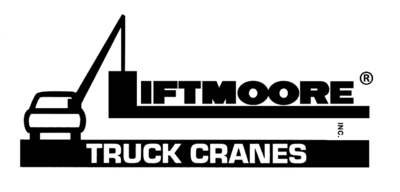DC Powered Crane vs Hydraulic Crane
Knowing your current and potential future needs will greatly help in determining which crane is right for your application. Specifying the correct crane, whether it be 12V DC powered or hydraulically powered, will ensure long lasting productivity and help to prevent issues down the road.
DC Powered Cranes
If you are working within a tight budget and your typical duty cycle is intermittent, or your lifting needs are infrequent at best, you may opt to invest in a 12-Volt DC powered crane. DC powered cranes generally cost less upfront, when compared to hydraulic cranes, and DC powered cranes don’t require the truck to be equipped with a PTO and Pump to operate.
Liftmoore offers 12-Volt DC Cranes:
- With max capacities from 800 lbs up to 6,000 lbs
- With moment ratings from 4,500 ft-lbs up to 36,000 ft-lbs
- With planetary gear style winches
- And with fully extended boom lengths ranging from 5ft to 20ft
It should be noted that DC powered cranes do have situational limitations in regards to size and operation and are typically limited to around 800 lbs - 6,000 lbs gross lifting capacity. In addition, ongoing, continuous use of a DC powered crane, may reduce its life cycle due to the heat generated by DC motors. Motors must be allowed to cool and batteries allowed to replenish their charge before operating again. We call this "duty cycle". DC powered cranes have a limited duty cycle of 5 minutes of continuous use that must be followed up with 25 minutes of cool down time. It's important to size your crane properly, as it may save you money upfront, but can turn out to be a costly mistake if you end up exceeding the crane's duty cycle. Exceeding the duty cycle constraints and over heating the motor is the #1 cause of DC Motor failure.

Hydraulic Cranes
If you know your usage will require ongoing operation periods and higher lifting needs. You may want to go the route of investing in a hydraulic crane instead. Hydraulic cranes allow for more control, continuous cycles, and lift capacities that exceed 6,000 lbs. Our cranes range in capacities from 3,200 lbs. to 10,000 lbs. Hydraulic cranes also run faster than electric cranes, thus allowing you to finish operations at a quicker rate. This is why you may see more service trucks equipped with hydraulic cranes.
- Hydraulic cranes are used when longer Duty Cycles are required with repetitive lifts.
- Moment ratings from 10,000 ft.-lbs. up to 72,000 ft.-lbs.
- Unlimited rotation on 5000 lb. capacity cranes and larger.
- Either on/off or proportional controls are available.
The limitation of hydraulic cranes is that the oil reservoir can heat up, which will limit its duty cycle. However, with a larger oil reservoir size, the duty cycle of a hydraulic crane be nearly limitless.

Rotation
Many crane manufacturers claim to have 360 degree rotation, however, the rotation may be limited at 375 or 400 degrees at which point the rotation will stop and must be reversed. This limitation must be considered when positioning the truck to perform the work at hand. Liftmoore cranes, both DC powered and hydraulically, typically have unlimited rotation. There is either an electric or electric/hydraulic swivel that allows this important feature. As a result there is no limitation by mechanical or electrical stop on the crane's rotation.
Having this information on hand should help ease your decision in determining which crane is best for your operation!
